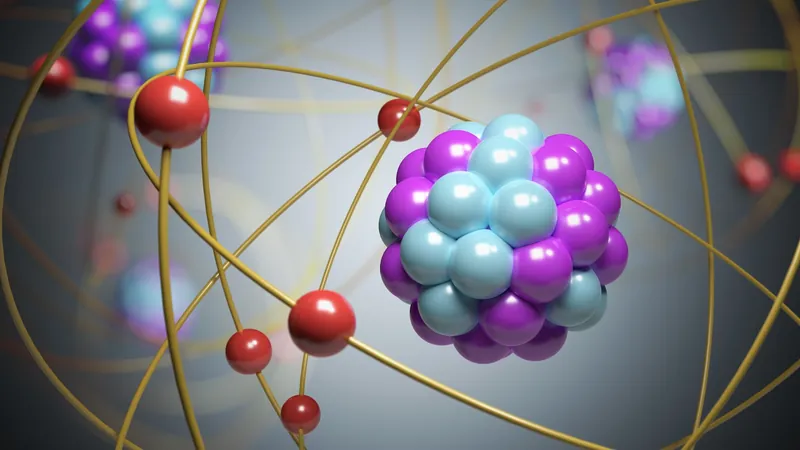
The Surprising Shapes of Atomic Nuclei: Why They're Not Always Round
2025-05-31
Author: Chun
Unraveling the Mysteries of Nucleus Shape
Since the dawn of atomic theory in 1911, scientists assumed atomic nuclei were round. This notion seemed logical and aligned with early measurements of nuclear properties. However, as research progressed, a more complex reality came to light.
The Nucleus: A Tiny Powerhouse
To grasp the comparison, consider this: the nucleus, composed of protons and neutrons, is like a fly in a cathedral—10,000 times smaller than the atom itself. Despite holding nearly all the atom's mass, the nucleus has little observable effect on its chemical properties; these are dictated by electron arrangements, while physical characteristics stem from atomic interactions.
The Rise of the Nuclear Shell Model
In 1949, scientists proposed the nuclear shell model, likening protons and neutrons to people in a theater, occupying distinct energy levels. Initially, this model held, but it soon became clear that nuclei often behave like a collective entity, capable of rotation and vibration.
From Theory to Discovery
Spectroscopic techniques reveal these rotational patterns, but symmetrical shapes—such as spheres—don't create a distinctive spectrum. The key insight? Only deformed nuclei can exhibit rotational evidence, leading researchers to uncover astonishing nuclear shapes, from pears to M&Ms. In fact, roughly 90% of nuclei are shaped like American footballs, known as 'prolate deformed,' while very few take on the 'oblate deformed' shape akin to a squashed sphere.
The Quest for Understanding Deformation
Scientists remain puzzled over why prolate shapes dominate; some nuclei can even switch shapes when energy is introduced. Unique pear-shaped nuclei exist in specific areas of the nuclear chart, especially around radium, while spherical nuclei are often found in atoms with 'magic' numbers of nuclear particles.
Quantum Mechanics: A Game Changer
Intuitively, one might expect that the natural state of a stable object would be spherical. Yet, in the world of quantum mechanics, this isn't the case. The Schrödinger equation, a fundamental tenet of quantum physics, predicts the likely configurations of particles over time, leading to unpredictable nuclear shapes.
Interestingly, the base solutions of this equation do not yield spherical shapes; they manifest as oscillating patterns. For rare instances where nuclei are spherical, the chaotic forces seem to balance out. However, the reasons behind the prevalence of certain deformations over others remain a mystery.
The Revolution in Our Understanding of Nuclei
This research overturns long-held beliefs about the uniformity of atomic nuclei, sparking numerous new questions in nuclear physics. As scientists continue to explore the intricate and often surprising shapes of nuclei, they peel back layers of complexity that challenge our understanding of atomic structure.





 Brasil (PT)
Brasil (PT)
 Canada (EN)
Canada (EN)
 Chile (ES)
Chile (ES)
 Česko (CS)
Česko (CS)
 대한민국 (KO)
대한민국 (KO)
 España (ES)
España (ES)
 France (FR)
France (FR)
 Hong Kong (EN)
Hong Kong (EN)
 Italia (IT)
Italia (IT)
 日本 (JA)
日本 (JA)
 Magyarország (HU)
Magyarország (HU)
 Norge (NO)
Norge (NO)
 Polska (PL)
Polska (PL)
 Schweiz (DE)
Schweiz (DE)
 Singapore (EN)
Singapore (EN)
 Sverige (SV)
Sverige (SV)
 Suomi (FI)
Suomi (FI)
 Türkiye (TR)
Türkiye (TR)
 الإمارات العربية المتحدة (AR)
الإمارات العربية المتحدة (AR)